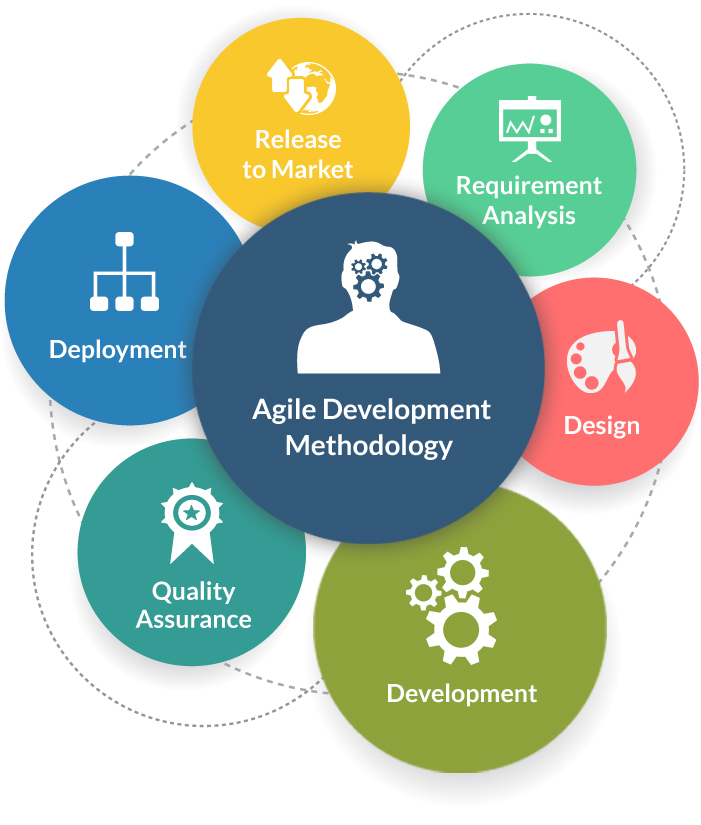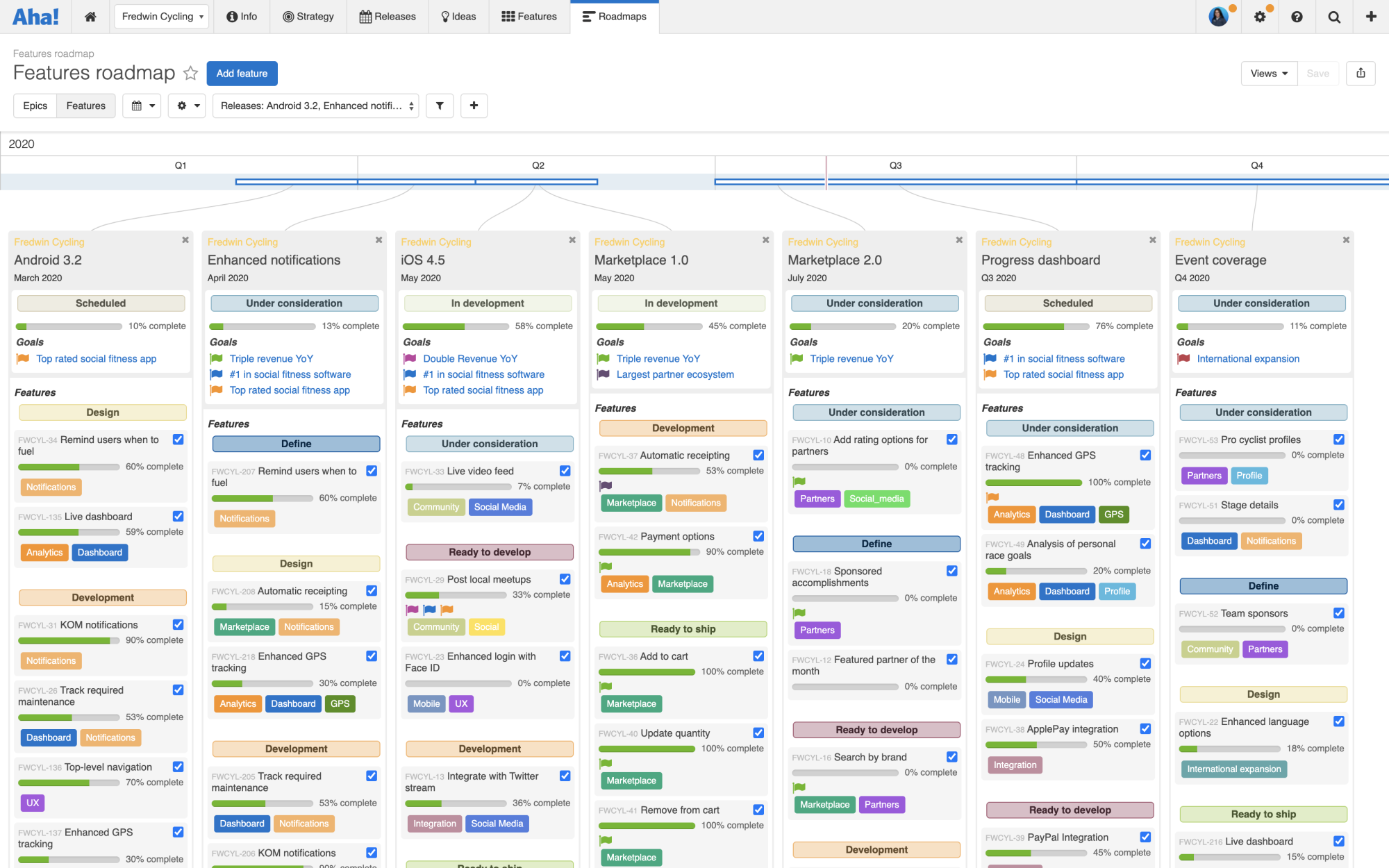Best Software Development Method
Best Software Development Method

Agile software development refers to a group of software development methodologies based on iterative development, This evolve through collaboration between self-organizing cross-functional teams.
In 2001 at Utah’s Snowbird ski resort, 17 software developers got together to discuss lightweight software development methods and produced the groundbreaking Agile Manifesto. Those developers certainly had vision, but there’s no way they could have known back then what the Agile movement would become. Almost 20 years later, Agile is everywhere. It has become a full-on business buzzword among the ranks of “synergy,” “disruptive,” and the all-time great, “thinking outside the box.”

1.Realse to market:
Releases should take into account all the additional work that must be accomplished, such as updating the public website and training the customer support team. While the supporting teams (like development) may define a release through their lens of deploying code into production through a series of sprints, the product owner incorporates this perspective (and those of teams and customers) into a complete delivery.
Why plan releases anymore?
In agile development, you may feel that there is no need to plan actual releases — and some may consider the term “release planning” obsolete in an agile world. But the value of releases is methodology-agnostic. Releases define your themed product journey, and represent major launch milestones for that overall journey.
You may choose to call it a “launch,” an increment, or some other name. Regardless, it is still a new offering your customers will anticipate and ultimately expect. In addition, your internal supporting teams must accommodate the plan in their schedule if they are to assist your efforts.
A release — and the plan to get there — provide your customers a vision into the journey they’ll be taking with your product. The release and its place in the journey also provide your teams valuable information on when they may need to engage on a dependency or market a new innovation (as just a few examples). In an agile world, the actual dates of engagement may have less precision as far as committed targets. However, a general delivery plan – even in an agile framework – will continue to establish trust and expectation in your product with your customers and teams.


Standardizing a release management process
A release management process may likely mean different things to a product management team and a development team. Both perspectives are strongly incorporated into a dependable release management process. A release management process incorporates all of the following:
Planning
An initial release plan takes into account the team’s velocity on the previous release (or general capacity to deliver) and the feature prioritization to create a general scope, sequencing, and timeline for the release. During release planning, a general expectation on the number of sprints or iterations to deliver the scope is achieved. The accuracy of this expectation and plan depends on whether the team’s capacity is well-known as well as the level of detail (or grooming) the scope has been through during estimation. This general plan will also provide expectations of major product changes (or dependencies) for products that may depend on your roadmap or platform.
Plans will be revisited after each iteration. For this reason, a tracking of an external release target (with quarterly, monthly, or other precision) can be helpful. It will still set the expectation and trust with your customers, but can be refined by you as the plan progresses.
Phased communication and supporting team engagement
Product managers know best how to deliver their product successfully — and that includes a series of non-development tasks of engagement with supporting teams to complete items like documentation, sales training, or marketing campaigns. As a product manager, establishing a launch or release template will enable you to create a “gold standard” for major delivery. Use this template to engage your greater team, who may be supporting multiple products in the portfolio only when needed. A standard for launch also sets expectation for when these teams will be needed internally.
Repeatable stages to readiness
Establish standardized status at both the release and feature level to indicate overall health of the plan. Status provides an “Are we good?” pulse point that can be key to seeing around corners and proactive risk mitigation. A release status will enable communication to your internal stakeholders, while feature status workflows enable granular visibility into the readiness of the feature and its current status with respect to development, staging, or QA environments.
Forward adjustment on plan
Regardless of whether your release plan is executed in sprints or via more waterfall methodologies, regular check-ins and adjustments to plan are necessary. Use your sprint closure to adjust plans as needed, or schedule regular reviews to ensure plans are on track.Next What are product features?
Related articles
- What are product features?
- What is requirements management?
- What is a product backlog?
- What is user story mapping?
- How do product managers plan releases across teams?
- What is a sprint?
- What is the difference between a product, release, and sprint backlog?
- What is a good product launch checklist?
Product managementProduct strategyProduct plansProduct roadmapsProduct development methodologiesRelease management
- Introduction to release management
- What are product features?
- What is requirements management?
- What is a product backlog?
- What is user story mapping?
- How do product managers plan releases across teams?
- What is a sprint?
- What is the difference between a product, release, and sprint backlog?
2. REQUIREMENT ANALYSIS
Information requirement analysis (IRA) is an information analysis methodology where the objective is to find the documents needed to carry out a process or activity in a business model. … IRA’s objective is to serve as a tool for information systems development, particularly within the requirements engineering phase.
3. Design
Information design is the practice of presenting information in a way that fosters an efficient and effective understanding of the information. The term has come to be used for a specific area of graphic design related to displaying information effectively, rather than just attractively or for artistic expression. Information design is closely related to the field of data visualization and is often taught as part of graphic design courses.[1] The broad applications of information design along with its close connections to other fields of design and communication practices have created some overlap in the definitions of communication design, data visualization, and information architecture.
According to Per Mollerup, information design is an explanation design. It explains the facts of the universe and leads to knowledge and informed action.

4. Development
Information Development aims to provide authoritative coverage of current developments in the provision, management and use of information and communication technology. The journals’ main focus is on the information needs and problems of developing countries. Information Development focuses on the development of information systems, services and skills, and the role of information in personal and national development.

5. Quality Assurance
What is Quality?
Quality is extremely hard to define, and it is simply stated: “Fit for use or purpose.” It is all about meeting the needs and expectations of customers with respect to functionality, design, reliability, durability, & price of the product.
What is Assurance?
Assurance is nothing but a positive declaration on a product or service, which gives confidence. It is the certainty of a product or a service, which will work well. It provides a guarantee that the product will work without any problems as per the expectations or requirements.

6. Deployment.
Software deployment is all of the activities that make a software system available for use.[1]
The general deployment process consists of several interrelated activities with possible transitions between them. These activities can occur at the producer side or on the consumer side or both. Because every software system is unique, the precise processes or procedures within each activity can hardly be defined. Therefore, “deployment” should be interpreted as a general process that has to be customized according to specific requirements or characteristics.


